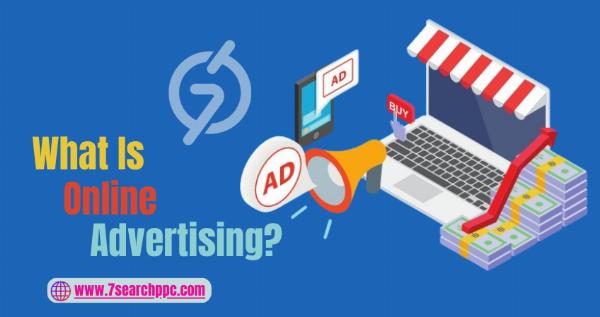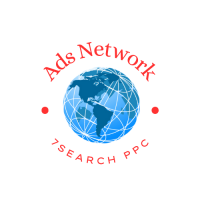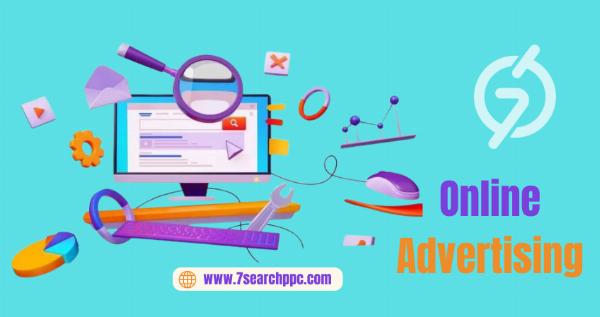What Is Online Advertising? Your Introduction to Online Ads

Strong 8k brings an ultra-HD IPTV experience to your living room and your pocket.
Welcome to the world of online advertising! If you've ever wondered how those seemingly tailor-made ads pop up on your screen or how businesses get their message across the vast expanse of the internet, you're in the right place. Online advertising has revolutionized the way businesses reach their audiences, making it more precise, cost-effective, and scalable than ever before. But what exactly is online advertising? Let's dive in.
Types of Online Advertising
Search Engine Advertising
Search engine advertising is one of the most common forms of online ads. It primarily involves two methods:
- Pay-Per-Click (PPC): This is where advertisers pay a fee each time one of their ads is clicked. Think Google Ads. It's like buying visits to your site rather than earning them organically.
- Search Engine Optimization (SEO): Unlike PPC, SEO focuses on optimizing your content to rank higher in search engine results organically. It involves using keywords, meta tags, and high-quality content to attract unpaid traffic.
Display Advertising
Display advertising involves placing ads on websites, apps, or social media through banners or other ad formats made of text, images, flash, video, and audio.
- Banner Ads: These are the rectangular ads you see at the top, side, or bottom of a webpage. They can be static or animated.
- Rich Media Ads: These include interactive elements like video, audio, or clickable features that engage users more than traditional banner ads.
Social Media Advertising
Social media platforms offer a treasure trove of opportunities for advertisers due to their extensive user data and targeting capabilities.
- Facebook Ads: Facebook provides a robust advertising platform with various ad formats, from image and video ads to carousel and slideshow ads.
- Instagram Ads: Known for its visual appeal, Instagram offers photo ads, video ads, carousel ads, and story ads.
- Twitter Ads: Twitter’s ad formats include promoted tweets, accounts, and trends, perfect for quick engagement and brand visibility.
Video Advertising
Video content is king in the digital world, and video advertising capitalizes on this trend.
- YouTube Ads: YouTube offers a variety of ad formats, including skippable and non-skippable in-stream ads, video discovery ads, and bumper ads.
- In-stream Ads: These are the ads that play before, during, or after video content on platforms like YouTube.
Native Advertising
Native ads blend seamlessly with the content around them, providing a less intrusive experience for users.
- Sponsored Content: Articles or videos created to promote a brand but designed to look like regular content.
- In-feed Ads: Ads that appear in the feed of a website or app, mimicking the surrounding content.
Email Advertising
Despite being one of the older forms of online advertising, email marketing remains highly effective.
- Newsletter Ads: Placing ads within regular newsletters sent to a subscriber list.
- Sponsored Emails: Emails sent on behalf of advertisers to a targeted audience.
Affiliate Marketing
Affiliate marketing involves a partnership where affiliates promote a company's products and earn a commission for each sale or action completed.
- Performance-based Marketing: Affiliates are rewarded based on their performance, such as sales or leads.
- Influencer Partnerships: Collaborating with influencers to promote products through their platforms.
Advantages of Online Advertising
Online advertising offers numerous benefits that make it an attractive option for businesses of all sizes.
- Targeted Reach: Ads can be highly targeted based on demographics, interests, behavior, and more.
- Cost-Effectiveness: Online ads often provide a better return on investment (ROI) compared to traditional advertising methods.
- Measurable Results: Tools like Google Analytics allow advertisers to track and measure the success of their campaigns in real-time.
- Flexibility and Scalability: Campaigns can be adjusted on the fly, and scaling efforts up or down is relatively easy.
- Real-Time Feedback: Instant feedback on ad performance helps in making quick, data-driven decisions.
Challenges in Online Advertising
While online advertising is powerful, it's not without its challenges.
- Ad Fraud: Issues like click fraud can drain budgets and skew analytics.
- Ad Blockers: Many users employ ad blockers, reducing the visibility of ads.
- Privacy Concerns: Stricter privacy laws and user concerns over data usage can limit targeting capabilities.
- High Competition: The low barrier to entry means a crowded market, making it tough to stand out.
Best Practices for Effective Online Advertising
To maximize the effectiveness of online ads, follow these best practices:
- Knowing Your Audience: Understand who your target audience is, their preferences, and their online behavior.
- Setting Clear Goals: Define what you want to achieve with your campaign, whether it's brand awareness, leads, or sales.
- Choosing the Right Platforms: Select the platforms that best match your audience and campaign goals.
- Crafting Engaging Content: Create compelling ad copy and visuals that grab attention and resonate with your audience.
- Utilizing Analytics: Regularly review analytics to measure performance and adjust strategies accordingly.
Future Trends in Online Advertising
The digital advertising landscape is continuously evolving, with several exciting trends on the horizon.
- Artificial Intelligence (AI): AI is transforming ad targeting, optimization, and personalization.
- Programmatic Advertising: Automated buying and selling of ad space is becoming more sophisticated and efficient.
- Voice Search Ads: As voice search grows, optimizing for voice queries is becoming increasingly important.
- Interactive Content: Ads that allow user interaction, such as polls or augmented reality (AR) experiences, are gaining traction.
Conclusion
Online advertising is a dynamic and powerful tool for reaching and engaging with your audience. From search engine ads to social media campaigns, the possibilities are vast and varied. By understanding the different types of online advertising, leveraging its advantages, and staying ahead of trends, businesses can effectively navigate the digital landscape and achieve their marketing goals.
FAQs
What are the most effective types of online ads?
The effectiveness of online ads depends on the business goals and target audience. However, PPC, social media ads, and video ads are generally highly effective.
How can small businesses benefit from online advertising?
Small businesses can benefit from online advertising by reaching a broader audience, targeting specific demographics, and gaining measurable insights to optimize their marketing efforts.
What tools can help measure the success of online ads?
Tools like Google Analytics, Facebook Ads Manager, and HubSpot are excellent for tracking and measuring the success of online advertising campaigns.
How does SEO differ from PPC?
SEO focuses on organically improving a website's ranking in search engine results, while PPC involves paying for ads to appear at the top of search results.
What are some cost-effective online advertising strategies?
Cost-effective strategies include leveraging social media platforms, using email marketing, and focusing on content marketing and SEO to attract organic traffic.
Note: IndiBlogHub features both user-submitted and editorial content. We do not verify third-party contributions. Read our Disclaimer and Privacy Policyfor details.



